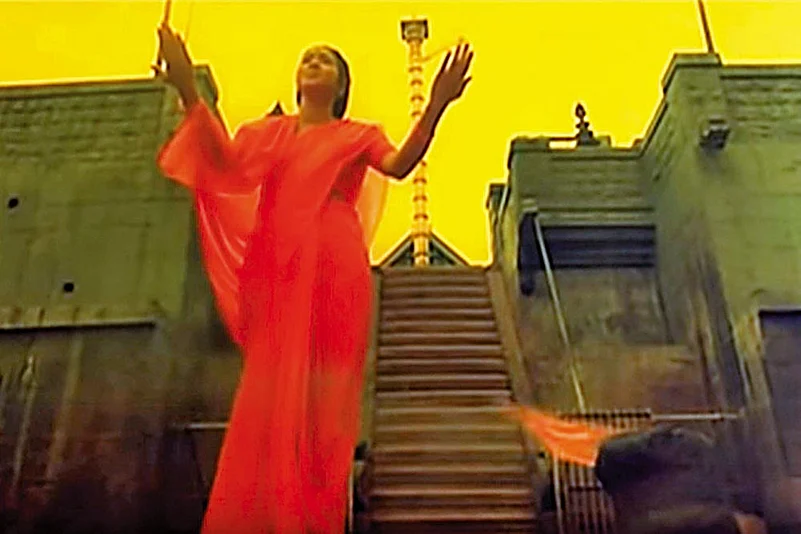Safeguard tradition. Save Sabarimala. Such have been the rallying cries of the prickled phalanxes protesting the recent Supreme Court judgment that overturned the ban on women between the ages of 10 and 50 entering the Ayyappan temple at Sabarimala in Kerala. In the eyes of many Malayalis, this was an assault on a tradition that, since time immemorial, had defended the immaculate chastity of their naishthika brahmacharin (chaste, perpetual religious student) lord. But memory is short, and hoary observances can be of surprisingly recent provenance; claims that the ban was only a few decades old—and not some eternal, divinely-ordained diktat—have been doing the rounds on social media and in news reports.
In a series of tweets, top Malayalam author N.S. Madhavan stated that women used to worship at Sabarimala before restrictions were imposed in the second half of the 20th century. Meanwhile, T.K.A. Nair, adviser and principal secretary to former PM Manmohan Singh, recalled that he had his ‘choroonu’ (first rice-feeding, or annapraashana) on his mother’s lap at Sabarimala in 1940. His mother would have been well within the restricted age range as, “I have two sisters and a brother, all younger than me.” The queen of Travancore is also recorded as having visited the temple in 1939–40, when she was in her 40s. What, then, is the history and nature of the ban?
“The temple was not popular in olden times because of the forest,” Madhavan tells Outlook. Renowned historian M.G.S. Narayanan concurs, saying, “Hardly anybody went there,” and “it had no all-Kerala importance until it was rebuilt following a 1950 fire.” This newfound popularity is said to have provoked the first formal restrictions.

Actress Jayasree in front of Sabarimala in a song from the 1986 movie Nambinal Keduvathillai.
In 1955 and ’56, the Travancore Devaswom Board, which controls the administration of Sabarimala, issued two notifications banning women between the ages of 10 and 55 from entering the temple, noting that this was contrary to “the fundamental principle underlying the pratishtha (installation).” A similar notification was issued in 1972. In 1965, the Kerala Hindu Public Places of Worship (Authorisation of Entry) Rules barred from any sacred place “women at such time during which they are not by custom or usage allowed to enter a place of public worship.”
Nevertheless, it seemed that women just couldn’t be stopped, and controversies continued to arise, including the shooting of a Tamil film in 1986 that featured an actress dancing in front of the famed steps of the temple. In 1986–87, when scholar Radhika Sekhar visited the temple, she was turned back at the top of the steps—but was then allowed in through the northern entrance.
A 1991 judgment of the Kerala high court in a PIL may provide some clarity as to the thitherto porous nature of this ban. The petitioner complained of young women offering prayers at Sabarimala, and specifically referred to the rice-feeding ceremony of the granddaughter of a former Devaswom commissioner. The grandmother responded by pointing out that the restriction only applied during the main pilgrimage seasons and that there was no problem during other periods. The temple was also open for the first five days of each Malayalam month, and that was when the rice-feeding ceremonies, for which the Devaswom Board prescribed charges and issued receipts, would take place.
Justice K.B. Marar of the Kerala High Court, writing on behalf of himself and Justice K. Paripoornan, noted that the people called upon to confirm these claims, including the tantri or hereditary head priest, affirmed that a restriction had always been in place, but the board and the tantri did not object to women entering during non-pilgrimage times, a practice that had apparently been in vogue for the past 40 years. This seemed somehow illogical to the learned judges, who proceeded to issue a blanket ban on women entering the temple.
That a traditional ban of some kind existed seems clear, not just from the testimonies given in the high court case, but also from the Memoir of the Survey of the Travancore and Cochin States, written by Lieutenants Ward and Conner and published in two parts in 1893 and 1901. In her dissent from the recent SC judgment, Justice Indu Malhotra quotes from it: “[women] who have attained puberty and to a certain time of life are forbid to approach, as all sexual intercourse in that vicinity is averse to this deity.” That, at least by the mid-late 20th century, the traditional authorities did not extend this restriction to off-season women visitors is clear. That they were, nonetheless, forced to extend it by non-traditional authorities is also clear.
















